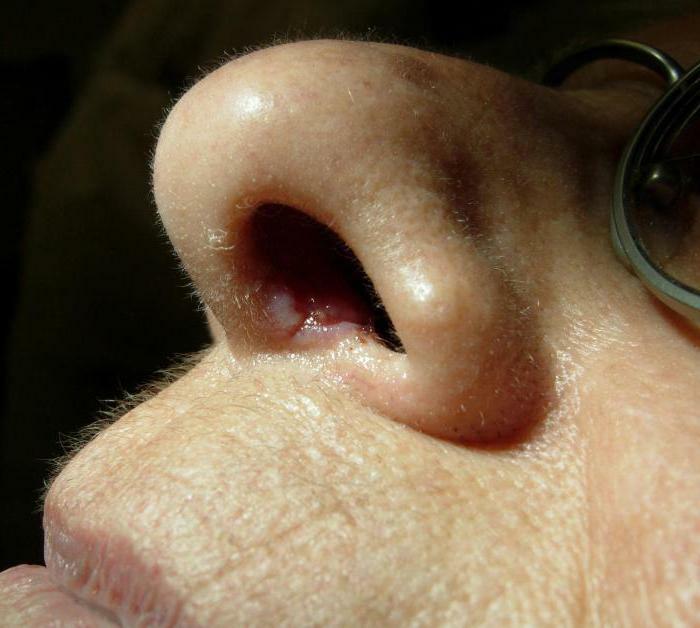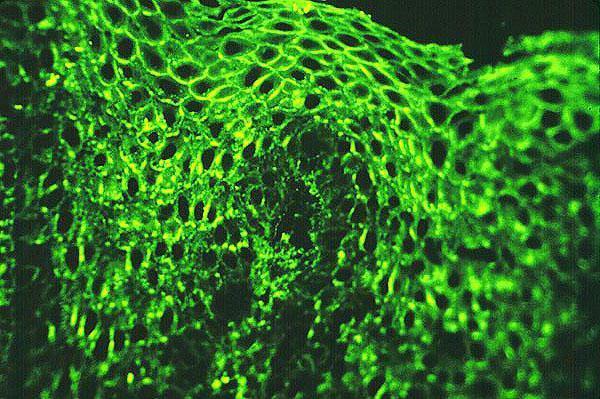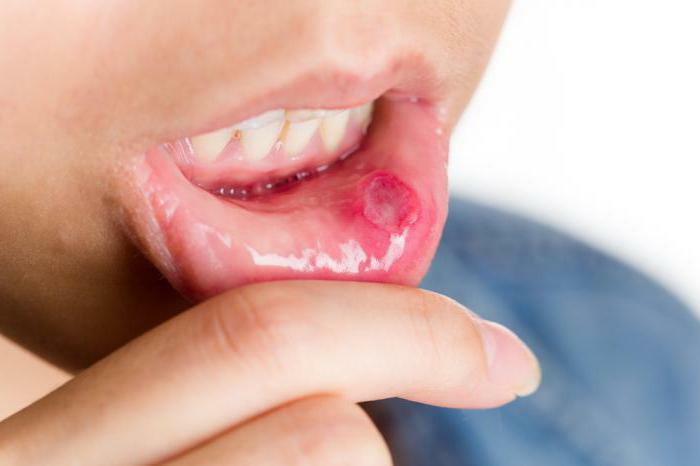Vulgar pemphigus: causes, symptoms, treatment, drugs. Autoimmune diseases
How does a disease such as pemphigus manifest? Treatment and symptoms of this disease will be discussed below. Also, you will learn about the causes of the development of this pathological process and the methods of its diagnosis. 
Basics
The pimple, the photo of which is presented in this article, is a group of rare, but very serious, potentially fatal and invalidating vesicle-bulbous autoimmune diseases that affect the skin and mucous membranes.
Specialists distinguish the following types of this disease:
- vulgar pemphigus;
- is a vegetative form;
- leaf-shaped;
- seborrhoeic( may have such names as Senira-Asher syndrome, or erythematous).
General characteristics of the disease
Vulgar pemphigus is a category of subcutaneous tissue and skin diseases that occurs in a chronic form, with frequent relapses.
This disease is hormonally dependent. It is characterized by a progressive course, as well as the formation of intra-epidermal blisters.
The most common vulgar pemphigus affects people aged 50 or more years.
Why does this disease occur? There are only hypotheses about the causes of the development of this disease. 
Pimple: the most likely causes
Before starting treatment of the disease in question it is very important to find out why this autoimmune disease has occurred in a particular patient. Unfortunately, it is rather difficult to find the cause of pemphigus development. Experts have been struggling with this problem for many decades. During this time they put forward only hypotheses:
- Exogenous factors, that is, taking medications, including penicillin and its derivatives, various interferons and others.
- Endogenous factors, including immune and genetic.
- Physical factors( may be affected by extensive burns and irradiation).
- Endocrine( eg, hormonal failure in the human body).
- Viruses( herpesviruses).
- Admission of certain foods.
Based on these factors explaining the likely occurrence of the disease, we conclude: vulgar pemphigus can be immunological, endocrine, infectious, neurogenic, toxic, etc. However, it should be noted that it is still unknown whether such changes are primary or whether they areThey are of a secondary nature, in response to the effect of the underlying cause.
Thus, the inability to identify the exact cause of the autoimmune disease under consideration significantly complicates its timely diagnosis, so many people develop severe complications very often.
Mechanism of nucleation
How is the development of such a disease as pemphigus? You can see photos of the initial stage of this disease in this article. Experts argue that the cause of this pathological process is the formation of autoaggressive antibodies to proteins belonging to the desmoglyin family. The latter are a kind of "glue", which connects adjacent epidermal cells by means of special connecting elements, called desmosomes. 
After activated lymphocytes and autoantibodies attack desmoglyins, the epidermal cells separate from each other, and the epidermis becomes porous and "pasted", resulting in easy peeling and penetration of various fungi and bacteria. In medical practice, this phenomenon is called acantholysis.
As a result of the described process, the patient has blisters on the skin, and also in its thickness. At the same time they are filled with exudate and constantly rot. Over time, the vesicles exfoliate from the covers, exposing the tissues and forming purulent and infected ulcers. In neglected cases, such formations can cover almost the entire surface of the human body. Historical background
Initially, about dermatological diseases specialists knew practically nothing. In this case, the term "pemphigus" was applied to all lesions of the mucous membranes and skin, which were accompanied by acantholysis, the formation of vesicles and the detachment of integuments with the development of festering ulcers. However, in 1964 an article was published in one of the medical journals, which changed the doctors' understanding of the disease in question, as well as the approach to its diagnosis and treatment. It was from this time that the presence of antibodies to desmoglyins in the blood plasma of patients became the main criterion for the detection of pemphigus. 
By the way, in 1971 there was one more article in which the autoimmune nature and the mechanism of development of this disease was investigated in detail.
The main symptoms of
Bubbles on the skin, resulting from the development of vulgar or ordinary pemphigus, are the very first sign of the development of the disease. It should be specially noted that this type of disease occurs most often. According to experts, it accounts for up to 77% of all detected forms of pemphigus.
Bubble lesions affect not only the skin of the patient, but also the mucous membrane of his mouth and throat. Subsequently, they extend to the limbs, external genitals, face and stuff.
What should I know about these dermatological diseases? As a rule, pemphigus develops suddenly. At the same time on the outwardly healthy skin tense bubbles of small size are formed, which with a noticeable rapidity become sluggish. Their contents are a transparent serous fluid( slightly cloudy).
After opening the papules, eroded surfaces are formed, which subsequently heal, but leave traces of brown pigmentation.
Such an autoimmune disease is characterized by severe leakage in chronic form. It should be noted that in some people without any treatment there was a spontaneous improvement in the condition, which was followed by exacerbation. 
Very often vulgar pemphigus is accompanied by a secondary infection( candidiasis).
Because of the loss of protein, fluid and infectious effects, the prognosis of this disease with severe forms is unfavorable.
Detection of
How is vulgar pemphigus discovered? Diagnosis of this disease is carried out in a hospital. In this case, the presence of the disease is detected on the basis of clinical symptoms and test results.
The first include:
- Symptom Asbo-Hansen. This sign is revealed by pressing a finger or a cover glass onto a whole( that is, not yet opened) bubble. This procedure helps to peel the epidermis in the area that is adjacent to the papule, as well as to increase its area due to the pressure of the liquid inside.
- Symptom of Nikolsky. This sign is revealed in the process of gripping pieces of a bubble with tweezers and rubbing with a finger of a section of skin that is outwardly intact near the lesion. This detaches the epidermis.
It should be noted that these symptoms of vulgar pemphigus are not specific, but diagnostic. It should be remembered that such manifestations can occur in other diseases. 
Laboratory tests
How is vulgar pemphigus diagnosed? Treatment of this autoimmune disease should be performed only after a medical examination. To identify such a disease apply:
- Histological analysis, suggesting the study of swabs or so-called bubble prints for the detection of acantholytic cells( ie, epidermal cells that underwent morphological changes).
It should be specially noted that based on the histological analysis, it is impossible to draw a conclusion about the development of autoimmune disease. This is due to the fact that there are other diseases with a similar picture.
- Immunofluorescent method that allows to reveal intracellular deposits of immunoglobulin G and A, and also to determine the main and secondary antigens - desmoglyin-3 and desmoglyin-1.This method of diagnosis is the most accurate.
Thus, the diagnosis of "vulgar pemphigus" is based on the combined data of clinical symptoms and the clinical picture of the disease, as well as the results of the immunofluorescence and histological examination method.
Treatment of
At the very beginning of the development of vulgar pemphigus, the patient is prescribed glucocorticoids. Preparations of this group are taken in shock doses. The appointment of such a medicinal product in large quantities has vital indications. As for contraindications and side effects, they are secondary.
What are the types of glucocorticoids prescribed for this disease? Drugs for the treatment of vulgar pemphigus can be: Prednisolone, Dexamethasone, and Triamptcinolone.
After improvement of the patient's condition, that is, in the absence of new blisters, the dose of drugs is gradually reduced and transferred to the supporting one in order to prevent relapse. Such treatment of patients is quite long.
In addition to glucocorticoids, patients may be prescribed cytostatics-immunosuppressants, including "Methotrexate", "Azathioprine" or "Prospidin".They are necessary to remove the resulting adverse reactions after taking essential medicines. 
Other therapies
If there are indications, for autoimmune diseases, the patient may be prescribed antibiotics, as well as drugs that support the work of the cardiovascular system, regulate blood pressure and normalize the work of the liver and kidneys.
Also necessary is the intake of potassium, calcium and vitamins. For external treatment of pemphigus, anti-inflammatory drugs, herbal tinctures and decoctions can be used.
It should also be noted that depending on the patient's condition, such procedures as hemabsorption, blood transfusion and plasmapheresis may be prescribed to him.
